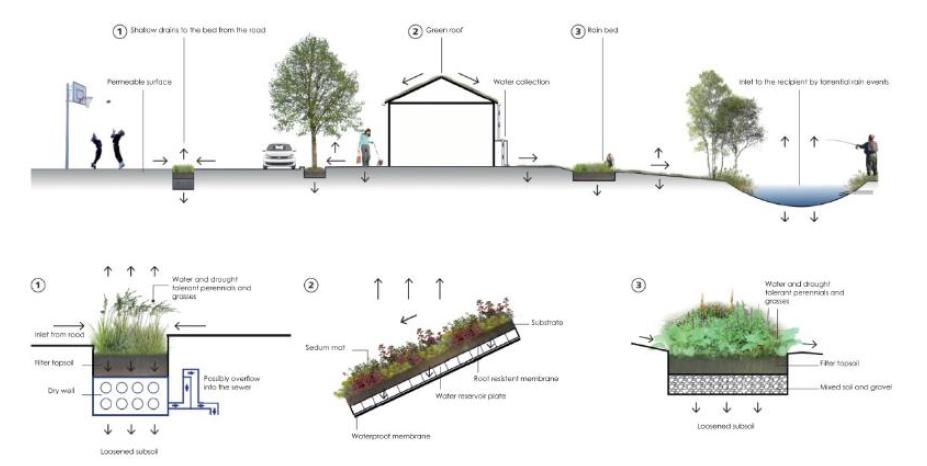Beneficiary responsible for implementation: Central Denmark Region (CDR)
Number of days estimated spent on action in phase 1: 158 Days
Budget: 148.094 €
Role:
C2C CC project management take on the role as a facilitator, coordinator and networking body of the CCA activities.
Relation to Climate Change Adaption (CCA) plans:
19 of the 21 municipalities’ CCA plans as well as one risk management plan mention rainwater as a major problem and the use of SUDS as a means to retain and reduce
rainwater run off (cf. Figure 1).
Linked to Complementary Actions:
Municipal and Water Utility CCA projects: the municipalities and the region are to mobilize and invest at least 16 mill. € on CCA projects within the project period. Likewise, the Danish utilities are to spend app. 135 mill. € annually on climate investments over the next 25 years. C2C CC will contribute with added value and influence the municipal CCA plans and waste water plans and the utilities’ future construction projects [Financed through taxes and water fees]. Tax and water fee financed CCA projects support the overall goal by making the region more climate resilient. However, it is also the aim of C2C CC to influence these projects towards more green and flexible solutions serving more purposes. There is a need for increased knowledge among the utility companies on the possible means and tools to be used when dealing with natural infiltration of rainwater.
Description (what, how, where and when):
Handling rainwater and extreme rainfall occurs mostly locally. However, experiences of problems and solutions can be shared between the municipalities and utilities, on technical as well as on organizational and process implementation challenges. Furthermore, incidents with extreme rainfall is the most experienced effect of climate change in Denmark, and thus also the challenge with the largest knowledge base. A large proportion of the knowledge base is placed in Greater Copenhagen area, were extensive cloud bursts have initiated a climate adaptation strategy incl. hundreds of local initiatives to cope with the heavy rain falls. The activities in this action, therefore, aim at bridging the knowledge gap within urban hydrology (E.g. surface groundwater interactions) and in water quality when rainwater is managed on the surface (instead of in the sewer).

